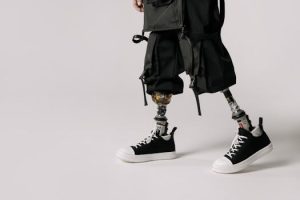Biometric Clothing Monitors Comprehensive Physiological Metrics
In the ever-evolving world of technology, there have been countless advancements that have shaped the way we live, work, and play. From smartphones to wearable devices, we are now able to monitor and track various aspects of our daily lives. One such innovation that has gained significant popularity in recent years is biometric clothing. This cutting-edge technology has the ability to monitor a person’s comprehensive physiological metrics, providing valuable insights about their health and well-being. In this article, we will delve deeper into the world of biometric clothing monitors and explore the myriad of benefits they offer.
The Rise of Biometric Clothing
Biometric clothing, also known as smart clothing, is a type of wearable technology that integrates electronic devices into garments. These devices have the ability to collect data from the wearer’s body, such as heart rate, breathing rate, and even muscle activity. This data is then transmitted wirelessly to a smartphone or other device for analysis and interpretation.
The idea of biometric clothing first emerged in the late 1990s, but it wasn’t until the early 2000s that the first prototypes were developed. Since then, the technology has rapidly advanced, with major players like Google, Apple, and Samsung investing in this market. Today, there is a wide range of biometric clothing available in the market, from smart t-shirts to compression leggings and even bras.
How Biometric Clothing Monitors Work
At the core of biometric clothing is the use of sensors, which are responsible for collecting the wearer’s physiological data. These sensors can be either woven into the fabric or attached to the clothing using special adhesives. The garment is then connected to a small device, usually a small clip or a small box, which transmits the data to a smartphone or other device through a wireless connection.
Most biometric clothing monitors use a combination of sensors to capture various physiological metrics. For example, a smart t-shirt may have sensors for measuring heart rate, breathing rate, and body temperature, while smart leggings may have sensors for tracking muscle activity and joint movements. These sensors work together to provide a comprehensive picture of the wearer’s overall health and well-being.
The Benefits of Biometric Clothing Monitors
Accurate and Real-Time Monitoring
One of the main benefits of biometric clothing is its ability to provide accurate and real-time monitoring of a person’s physiological metrics. Unlike traditional methods, such as fitness trackers or smartwatches, which may not provide accurate readings, biometric clothing monitors are in direct contact with the body, making their measurements more precise. This makes them ideal for athletes, fitness enthusiasts, and people with chronic conditions who need to closely monitor their health.
Convenience and Comfort
Biometric clothing is designed to be worn throughout the day, making it a more convenient option for monitoring compared to other devices that may need to be taken off for charging or charging. Additionally, the fabric used in these garments is soft, stretchable, and breathable, making them comfortable to wear for extended periods. This means that users can go about their daily activities without feeling restricted or uncomfortable.
Improved Performance
For athletes, biometric clothing monitors offer a wealth of benefits. By providing real-time feedback on their performance and physiological data, these devices can help athletes tailor their training and make adjustments to achieve their goals. For example, if a runner’s heart rate is too high, they can slow down to stay within their target range. This can ultimately lead to improved performance and better results.
Early Detection of Health Issues
Biometric clothing can also be beneficial for individuals with chronic health conditions. By continuously monitoring their physiological metrics, these individuals can detect any changes or abnormalities early on, allowing them to seek medical attention before the condition worsens. This can significantly improve their quality of life and potentially even save lives.
Conclusion
In conclusion, biometric clothing monitors offer a revolutionary and convenient way to monitor an individual’s physiological metrics. With their accurate and real-time monitoring, comfort and convenience, and potential to improve performance and detect health issues early on, these devices are gaining popularity and are undoubtedly here to stay. As technology continues to advance, we can expect to see even more advancements in the world of biometric clothing, making it an indispensable tool for maintaining our health and well-being.











